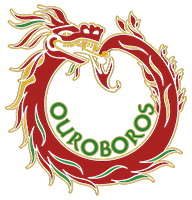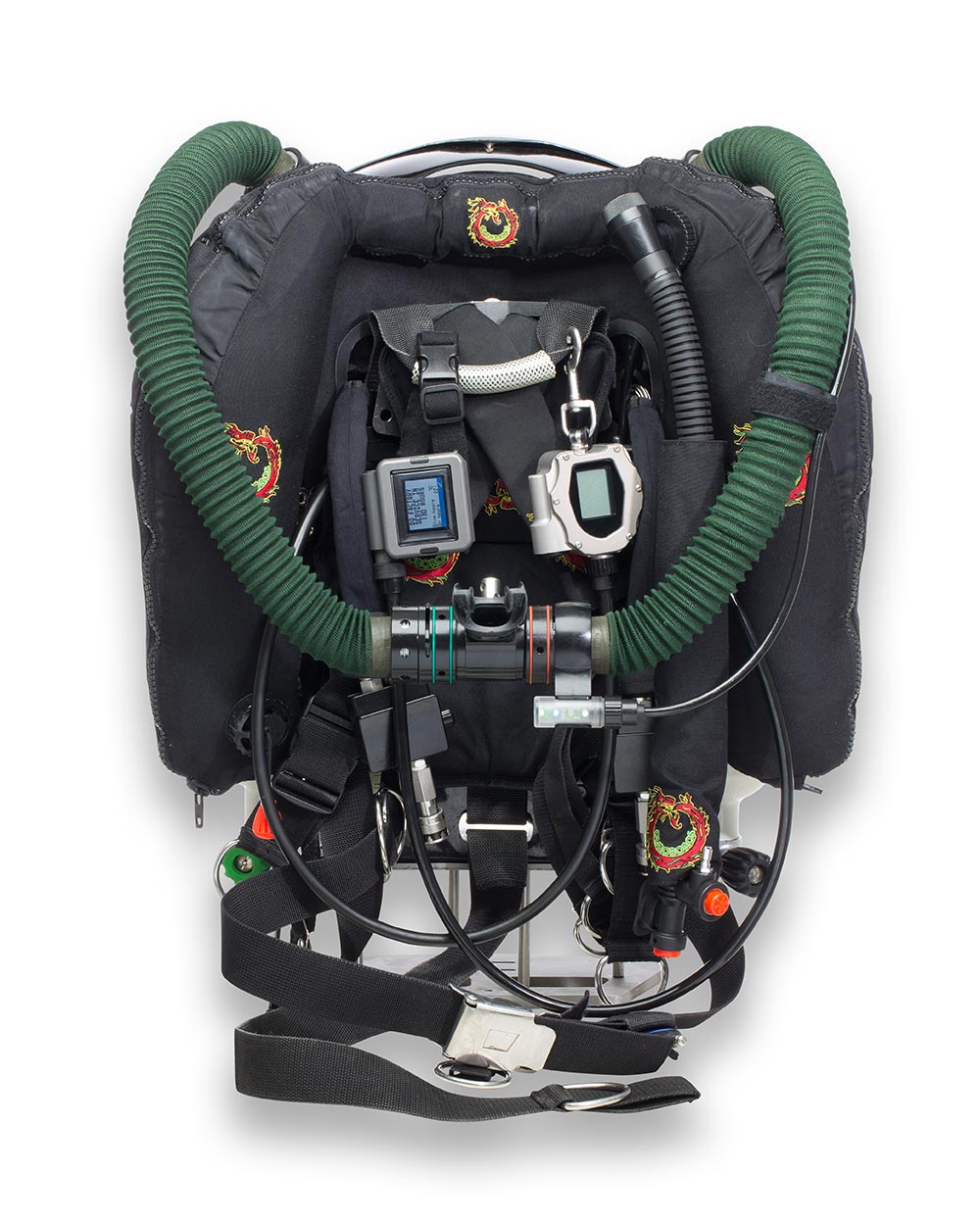

Description
The Ouroboros (which has been nicknamed Boris) was invented by leading technical diver Kevin Gurr, and appears to be extremely well thought out, with a strong emphasis on redundancy and backup. Like most rebreathers, it consists of a pair of counter lungs mounted at the rear, a scrubber (to take out the CO2), twin-hose mouthpiece and monitoring electronics. However, it’s the design and materials used to construct the rebreather that put Boris into a different league. All ‘plumbing’ is made from 316 marine-grade stainless steel, which is connected using cone fittings, eliminating the need for the use of O-rings and their inherent possible weakness.
The scrubber is a radial design rather than axial. This means that the gas passes over the scrubber from the centre of the unit to the edge rather than from one end to the other. The claimed advantage of this design is far more efficient use of the Sofnolime (CO₂-absorbent chemical). The CE specifications appear to back this up with a stated life of 90 minutes at 100m, 150 minutes at 40m and 210 minutes at 15m.
The flood-recovery mechanism is another well thought-out feature. Any water that enters the unit is channelled down the exhale hose to the exhale counter lung. The bottom of this counter lung is fitted with an over-pressure valve, which will force out flood water while releasing surplus gas. On-board gas is supplied by two 2-litre cylinders mounted within the unit.
What drives the Ouroboros is a comprehensive computer complete with on-board software taken form Delta P Technology’s VR3 computer. Three C cells power the primary display, giving 25 to 30 hours use. A passive display that runs off its own battery and is wired separately from the main unit allows monitoring of the CCR, in the event the primary display falls. A third method of seeing the status of the unit is in the form of a HUD (head-up display). This consist of four different coloured LEDs (light-emitting diodes). A white LED is on all the time and informs you that the unit is on. If it starts to flash, this indicates a problem, which will be displayed on the handset. A red LED gives you your decompression status. ‘Off’ means no stop is required, slow flashing means decompression is required, and this stops flashing but remains on at the correct decompression depth. If it flashes quickly, the decompression has been violated. The third LED is blue and informs you that solenoid, the device that injects oxygen into the CCR, is functioning correctly. Lastly, the green LED remains a solid light when the ppO₂ (partial pressure of oxygen) is in the desired range. Slow flashing means that the ppO₂ is too low, and fast flashing that the ppO₂ is above the set point. The set point has three default settings of 0.7 (low), 1.2 and 1.4 (high) although you can manual adjust them from 0.4 to 2 bar.
The HUD is also equipped with a vibrator that reacts to the various alarms. As touch is the final sense to go when things go wrong, this feature will hopefully give the user a last-minute chance to take action.
Although Boris is reliant on its electronics, in an emergency situation it is easily possible to run it manually. A neat design feature is that there is a second primary display which is mounted on the rear of the unit. This allows your buddy to monitor the status of your CCR at a glance.
Essentially, it is aimed at the serious technical diver. Its deep depth capabilities are clearly an advantage, as too is the redundancy in the displays.



